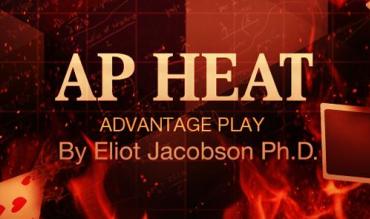Yesterday I received a request to analyze Ultimate Texas Hold'em (UTH). This isn't the first time I've had this particular request. I wrote the code to analyze UTH a couple of years ago when an online casino company asked me to independently verify the house edge. To say that this is a big game is an understatement. For practical use, running a cycle is only the first step. The information must then be culled into rules that can be effectively used. For hole-card analysis, the computations get even bigger.
James Grosjean covers UTH in Chapter 64 (pp. 356 - 366) of Beyond Counting ("The Book"). On page 358, Grosjean said:
The first approach ... is to let a computer cycle through every combination of cards, making the perfect decision as each possible card is dealt. The "optimal edge" calculated using this combinatorial analysis will be reported with many digits and great fanfare, sometimes accompanied by a boast about how many days it took the computer to accomplish the Herculean feat of calculating the gazillion possibilities.
That certainly describes me. Grosjean goes on to present his method of analysis on page 359:
We will provide certain descriptive categories with rules that can be prememorized ... we will incorporate the method of counting outs.
The quality and quantity of work that Grosjean presents, together with the proprietary nature of his strategies, goes beyond anything I would want to copy and paste to this blog. Even citing the "Fair Use" doctrine, this goes too far. In the academic world, it is a common and acceptable practice to freely cite, quote and use research published in journals. But The Book is not a journal. And it is not publicly available.
For the aspiring AP, you will have to use your connections to get a copy of The Book.
For the casino side, quantifying this vulnerability is key. The following information, which I have not verified, is what you need to know:
-
Knowing both of the dealer's hole-cards before acting on the 4x raise bet, the edge for the player is about 35%. (pg. 357).
-
Knowing one of the dealer's hole-cards before acting on the 4x raise bet, a strategy is given, but no edge is given. An AP commented that it is about 12% to 13% (pg. 364).
-
Knowing one of the flop cards after the 4x raise bet (seeing no cards) but before acting on the 2x flop bet, the edge for the player is about 3.62% (pg. 363).
-
Knowing one of the dealer's hole-cards and one flop card prior to the 4x raise bet, the edge for the player is about 20.74%. (pg 365).
-
Knowing one of the dealer's hole-cards and one river card prior to the 4x raise bet, the edge for the player is about 24.10%. (pg 366).
These numbers show that given the right circumstances, UTH is a highly profitable opportunity for the AP.
The only situation above where I am comfortable giving a strategy is if the AP sees both of the dealer's hole-cards. In this case, the AP who follows the "obvious strategy" will raise at the first opportunity that he is ahead, otherwise he will check/fold. However, as Grosjean points out, this strategy only returns 34.59% (pg. 358). There are situations where the player is ahead, but the number of outs for the dealer outweighs the immediate player advantage.
In my observations, many casinos hand deal UTH. Sometimes, the cards for each betting street are not dealt until after the player makes his play decision. This is probably the strongest and safest way to deal the game. This is the most common way the game is dealt in Las Vegas, for example.
But even in a hand dealt game, cards can be exposed. For those dealers who don't take carnival games seriously, they may expose multiple cards through sloppy hand dealing. That's as good as it gets for the AP.
But other times, UTH is dealt from an automatic shuffler and hole-cards are clearly visible. If the shuffler is placed in a compromising location on the table, or if the dealer breaks procedure in how she delivers the cards, it is not that uncommon to see various combinations of dealer cards, flop cards and river cards.
At a casino in Oklahoma I was visiting, I could see hole-cards from 30 feet away. I was speaking at a conference at that casino, and I pointed this issue out to the audience. The next thing I knew, after my talk, a dozen or so attendees were gathered near a UTH table. One pointed to the table and loudly proclaimed: "I saw it! It was the four of hearts!" Needless to say, the casino was not too happy with me. But, I am sure the problem is now fixed.


